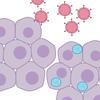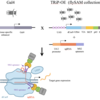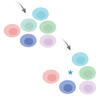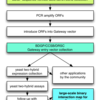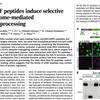Genome-wide screen
. 2015. “Ex vivo genome-wide RNAi screening of the Drosophila Toll signaling pathway elicited by a larva-derived tissue extract.” Biochem Biophys Res Commun, 467, 2, Pp. 400-6.Abstract
. 2015. “Genome-wide RNAi screening implicates the E3 ubiquitin ligase Sherpa in mediating innate immune signaling by Toll in Drosophila adults.” Sci Signal, 8, 400, Pp. ra107.Abstract
Missed us at ADRC 2018? View our workshop slides!
Pooled-format CRISPR screens in Drosophila cells
2018
Jun
20
2018
Apr
13
. 10/9/2017. “Accessing the Phenotype Gap: Enabling Systematic Investigation of Paralog Functional Complexity with CRISPR.” Dev Cell, 43, 1, Pp. 6-9.Abstract
Plasmid clones and data available from the FlyBi project
Francois Payre's plenary talk at ADRC 2017 features results from DRSC cell-based screen
. 2015. “Pri sORF peptides induce selective proteasome-mediated protein processing.” Science, 349, 6254, Pp. 1356-8.Abstract
Now Available: Our 2017 NAR database issue update
. 10/11/2016. “FlyRNAi.org—the database of the Drosophila RNAi screening center and transgenic RNAi project: 2017 update.” Nucleic Acids Research. Publisher's VersionAbstract
. 10/31/2016. “Loss-of-function genetic tools for animal models: cross-species and cross-platform differences.” Nat Rev Genet. Publisher's VersionAbstract

